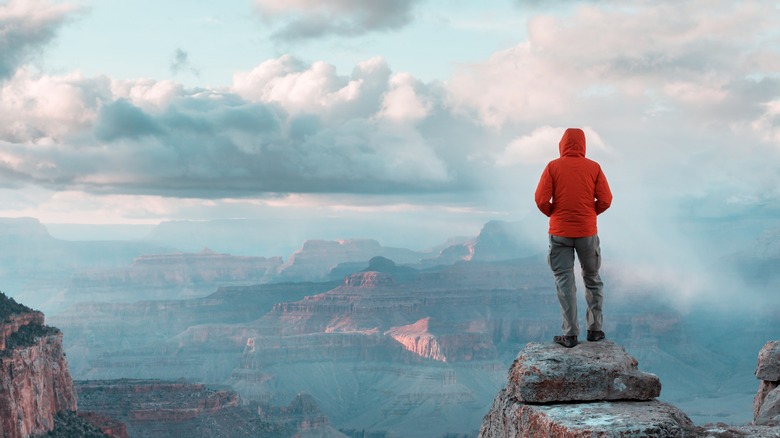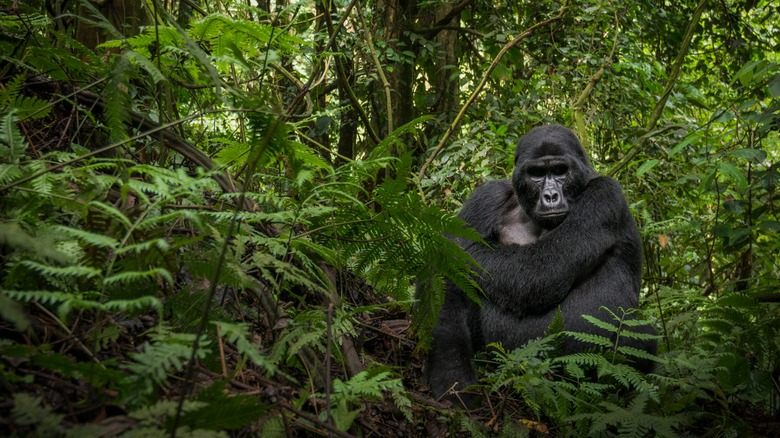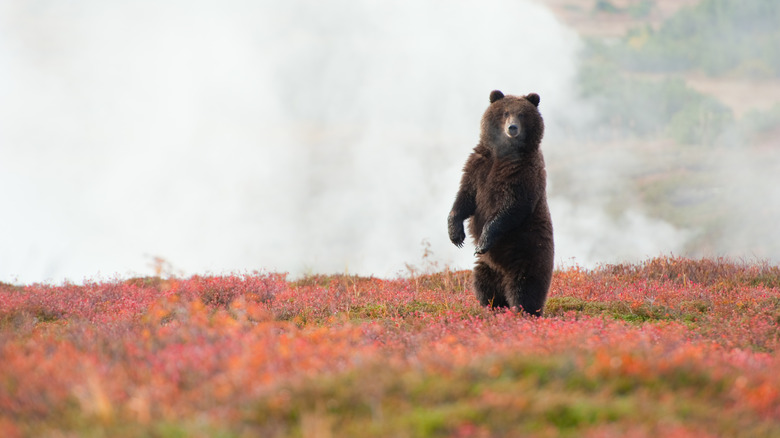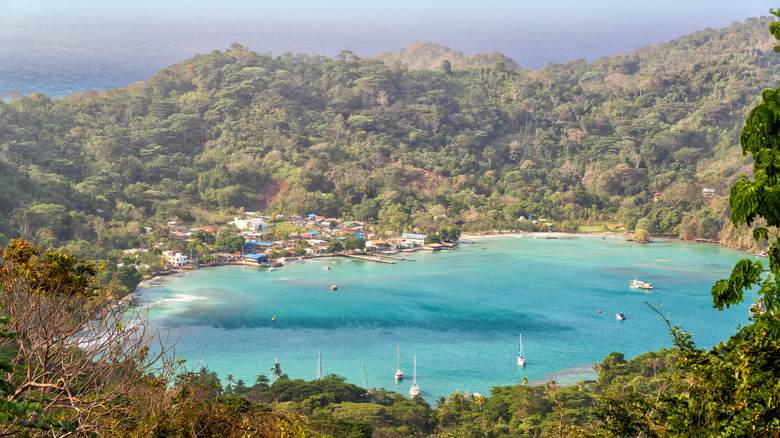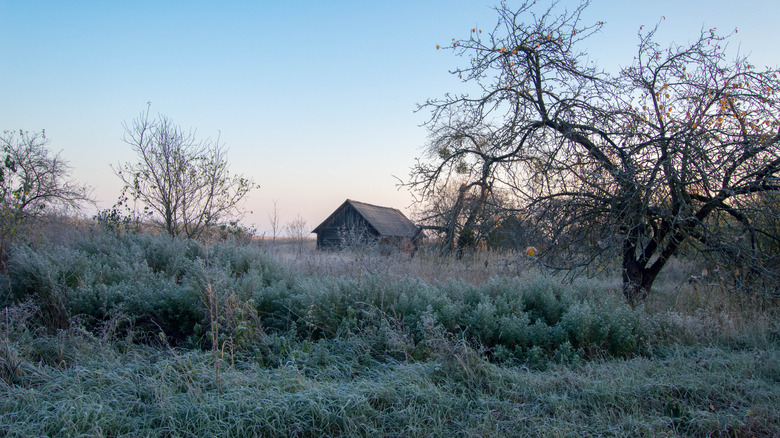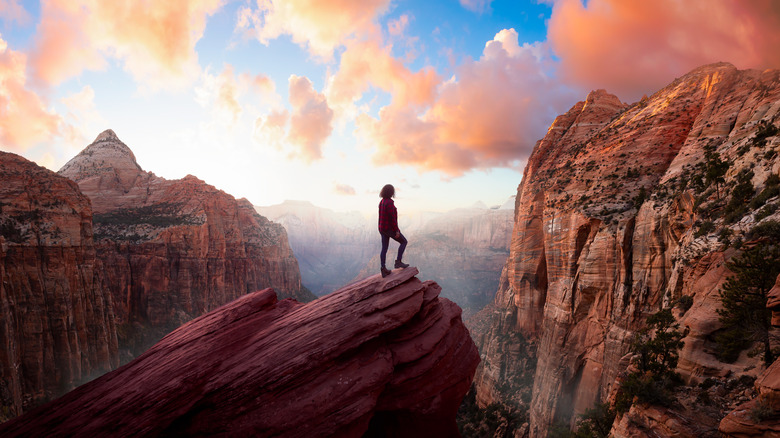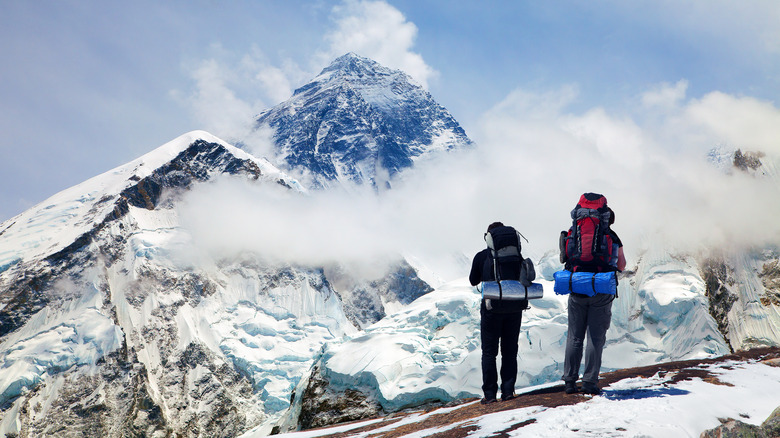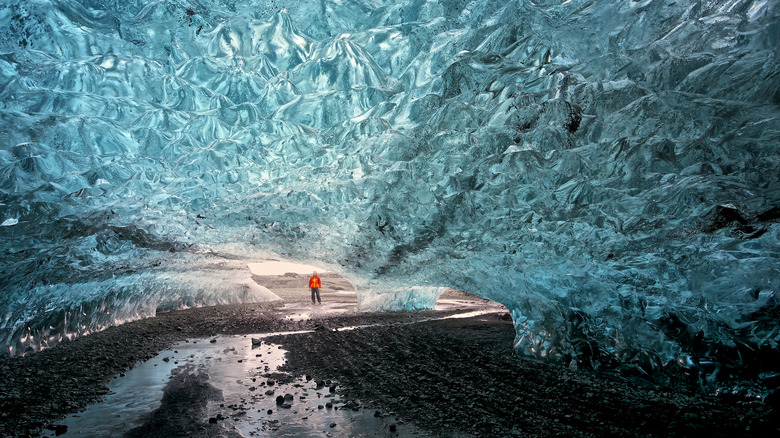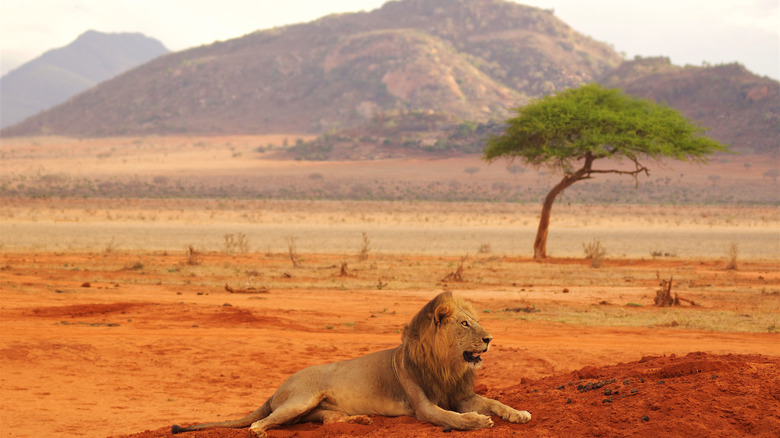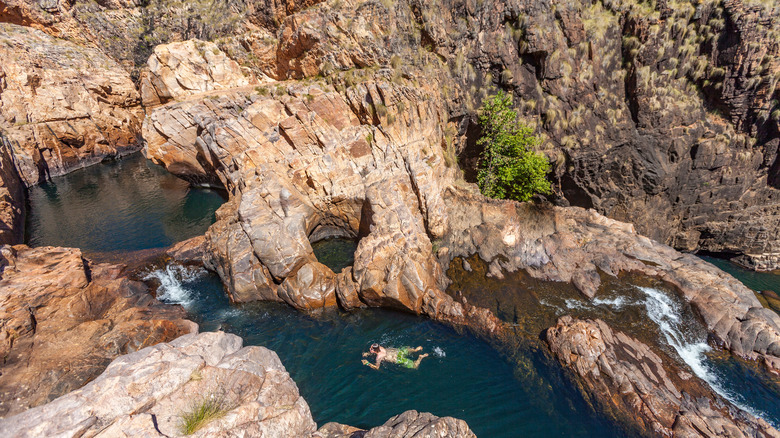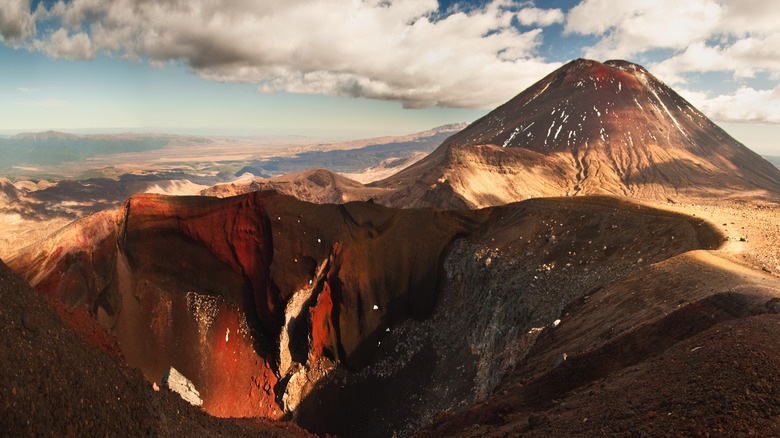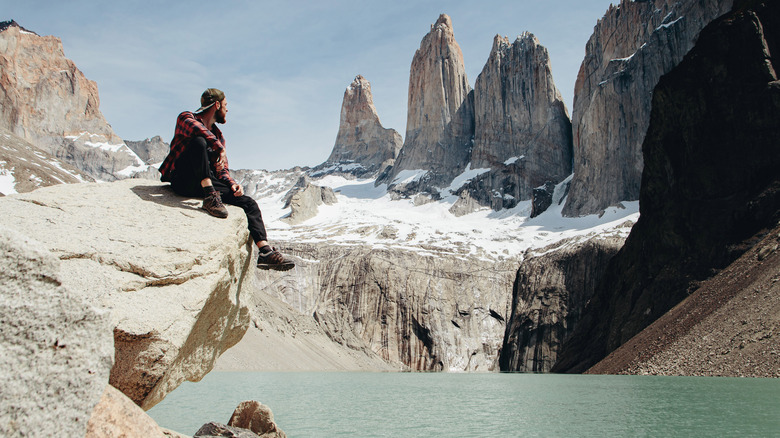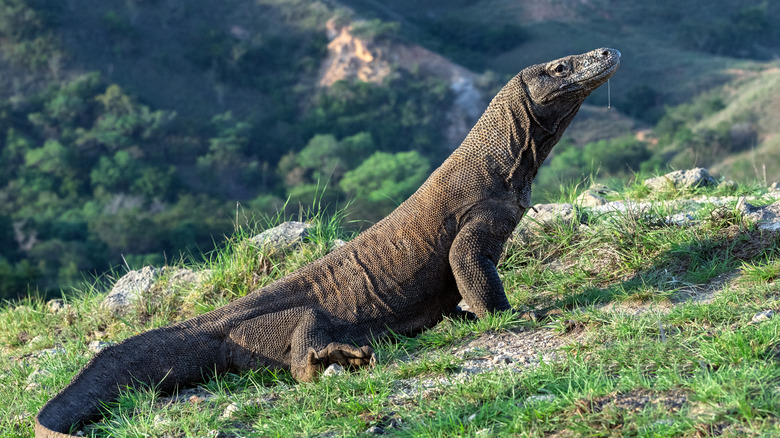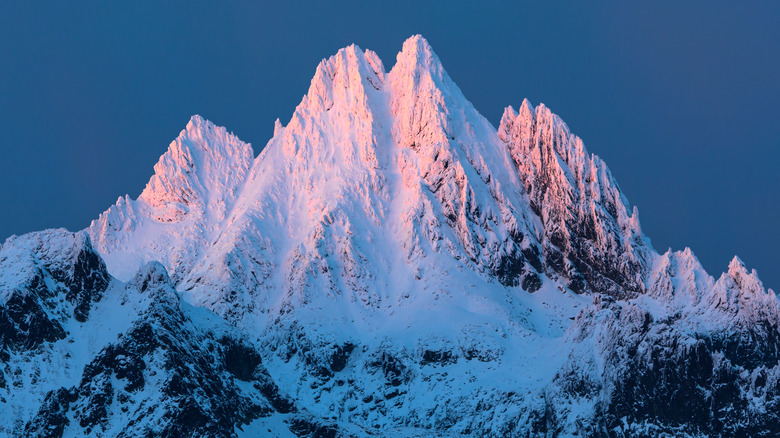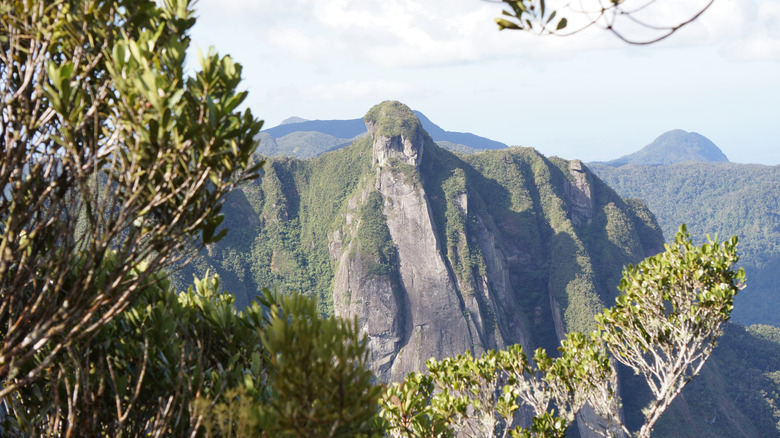The Most Dangerous Parks Around The World
Nature is a paradox — its raw, awe-inspiring allure can also be the very thing that brings threats to those who seek to revel in it. Nature's risks and rewards are two sides of the same coin that adventurers need to embrace. National parks, established to preserve nature's pristine beauty while managing its inherent perils, often present this intricate balance.
While national parks play a crucial role in maintaining biodiversity and ecosystems, even the best governments or organizations cannot control nature's force. That's why exercising proper caution, careful planning, as well as mental and physical preparation is crucial to mitigate risks when visiting national parks. Beyond threats from nature, human activities often contribute to safety concerns, that's why knowledge is crucial to plan a rewarding adventure.
Sometimes, though, the dangers overshadow the beauty and extra caution is needed when venturing into some of the world's most dangerous parks. From exotic jungles that harbor deadly creatures to ethereal glacier landscapes capable of triggering fatal avalanches, you'll be the judge if the beauty is worth the risk.
Virunga National Park - Democratic Republic of Congo
Virunga National Park, nestled in the Democratic Republic of Congo, stands as an extraordinary yet demanding destination. Spanning over 3,000 square miles of swamps, forests, volcanoes, and snowfields, this natural reserve is wild in more ways than one.
To begin with, the region's history of armed conflicts and political instability contribute greatly to the park's security concerns. In 2023 alone, the Park's official website confirmed the deaths of six park rangers and one civilian technician due to violent attacks by local militias. While there are no recent reports of visitor casualties, the fact that dozens of rebel groups reside in and around the park is enough reason to exercise extra caution and strictly stay within the established trek routes.
Virunga is also the habitat of a captivating cast of wildlife characters, including the famous mountain gorillas. While meeting these magnificent primates is a dream for many, it is safest to sign up for an official tour with armed rangers. Another popular route to try is the Nyiragongo volcano trek, which offers a chance to spot relatively milder wildlife including chimpanzees, monkeys, and bushbuck.
Kronotsky Nature Reserve - Russia
This Russian park is home to the largest protected brown bear population in Eurasia, boasting over 800 bears across its 4,243-square-mile area. While the chance of a brown bear attack is quite slim, exercising proper caution is very much needed to avoid triggering their aggressive behavior.
Other than being home to the bears, the Kronotsky Nature Reserve also houses at least eight active volcanoes, introducing an additional risk of eruption or earthquakes. The region is also subject to harsh and unpredictable weather conditions, including heavy snowfall and icy temperatures. Combine these challenges with the rugged and isolated terrain — deep valleys, lava fields, geysers, wilderness, even coastal areas — and you're in for a truly demanding adventure.
The vast expansiveness and isolation of the reserve also complicate rescue operations. That makes it essential to prepare your own emergency kit as well as make sure you are in tip-top physical and mental condition before meeting the challenges of this subarctic environment and enjoying its rewards of pristine, breathtaking landscapes.
Darien National Park - Panama
Tucked away in the heart of Panama, Darien National Park is a captivating yet tricky beauty to behold. Picture this. You find yourself in a dense rainforest, lush and thick as far as the eyes can see. You struggle to find any established trails because a large part of Darien's 2,240 square miles area remains pristine and untouched. Instead, you see venomous snakes, scorpions, pumas, aggressive insects, and other potentially threatening wildlife.
As if the natural threats aren't enough, this vast nature reserve also conceals some of the region's criminal groups and their illicit activities. That is made worse by the fact that this national park covers part of the infamous Darien Gap between Panama of Colombia, which has been dubbed one of the world's most dangerous migrant routes due to border tension, inhospitable conditions, and significant cartel presence.
For anyone daring enough to attempt this rewarding but challenging journey, securing a permit is a must. The government strongly recommends traveling in groups or with a guide. Additionally, don't forget to bring your own first-aid kit for injuries and any venomous incidents, as the limited infrastructure makes it that much harder for emergency services to help you.
Chernobyl Radiation and Ecological Biosphere Reserve - Ukraine
The echoes of the 1986 nuclear disaster still resonate in the vicinity of the notorious Chernobyl Nuclear Power Plant in Ukraine. Over the decades, there has been environmental revival and restoration against the eerie backdrop left by the catastrophe. Decaying infrastructure and possible radiation hotspots remain a silent threat, though wildlife continues to flourish all around, creating an otherworldly and unsettling atmosphere.
The Chernobyl Radiation and Ecological Biosphere Reserve comprises forests, rivers, and diverse ecosystems, forming part of the broader Chernobyl Exclusion Zone. To this day, numerous spots are still deemed too hazardous due to the remaining radiation, making them off-limits for exploration. Even the parts that are open to tourists, such as the abandoned city of Pripyat, are still affected by nuclear radiation, only to a lesser degree. You'll still need to obtain a pass to visit legally.
Safety threats also come from abandoned infrastructures in the area. Many of the remaining buildings are barricaded and are illegal to enter. It is advisable to follow these cautions, even if you see other people sneaking in when there are no guards around. Another important safety tip is to avoid interacting with wildlife, as they may carry radioactive particles.
Grand Canyon National Park - Arizona, U.S.A.
Renowned for its breathtaking beauty and geological wonders, Grand Canyon National Park also harbors inherent dangers that demand respect and caution from visitors. Among hundreds of national parks in the United States, the Grand Canyon has the highest number of incidents, including missing persons and deaths. Common causes for casualties include falling and environmental strains during hiking such as dehydration, starvation, and freezing.
First off, the Grand Canyon is deceptively expansive, leading some to underestimate the physical challenges of traversing its trails. Even experienced hikers may experience difficulties navigating the steep and strenuous paths, along with drastic changes in elevation and possible rockfalls. Add to that the notoriously unpredictable weather, which includes sudden storms, lightning, and flash floods that can turn an already challenging hike into a hazardous situation.
To stay safe, stick to established Grand Canyon trails, and check weather forecasts to avoid the chances of rainfalls and thunderstorms that may lead to flash floods and rockfalls. Also, be aware that summer months can be particularly harsh, with daytime temperatures potentially reaching up to 120 degrees Fahrenheit.
Sagarmatha National Park - Nepal
Home to the towering giants of Mount Everest and its formidable neighbors, Sagarmatha National Park in Nepal promises breathtaking beauty for those daring to explore its demanding trails. Often referred to as the world's highest graveyard, Mount Everest has claimed the lives of at least 320 people in the past 80 years, with an estimated 200 of these bodies still remaining on the mountain.
The soaring altitude alone poses a significant threat. As hikers ascend and the air becomes thinner, symptoms such as headaches, nausea, and dizziness begin to arise. In severe cases, this can also lead to life-threatening conditions like high-altitude pulmonary or cerebral edema. Altitude illness is just one of many potential dangers that can harm hikers; others include falls and exhaustion. Factor in the unpredictable mountain weather, featuring sudden blizzards and avalanches, and the journey has become even riskier. Needless to say, proper acclimatization, awareness, and meticulous planning are needed to meet the challenges of the Sagarmatha National Park.
Vatnajökull National Park - Iceland
Vatnajökull is the largest glacier in Europe, covering more than 8% of Iceland's entirety. Vatnajökull National Park's dynamic beauty presents an ever-changing, breathtaking scenery that's unlike any other place on the planet. Beyond just glaciers, this majestic park houses a diverse set of natural wonders including volcanoes, waterfalls, ice caves, and wilderness.
The reward matches the risks, though. For one, the ethereal beauty of the park's colossal glaciers conceals hidden crevasses or ice cracks that can cause serious injury. If you're drawn to the idea of ever-changing scenery, remember that it's caused by avalanches, floods, and ice collapses, which also means safety threats for us mortals. It's essential to enter only marked safe areas open for explorations, especially when venturing into ice caves. And that's not all. Neighbors to the glaciers are active volcanoes with their own hazardous lava flows and ash clouds. The unstable and unpredictable weather in Iceland also adds a layer of precaution.
Tsavo National Park - Kenya
The vast and majestic landscapes of Africa's wilderness have always been a captivating spectacle dreamed by many. The untamed beauty of the animal kingdom from regal lions to majestic elephants, with elegant acacia dotting the expansive savannah, all accompanied by calls of birds, truly immerses anyone in the primal rhythm of nature.
While all African wildlife demands fear and respect, Tsavo National Park in Kenya stands out with a blood-curdling tale that marks it as one of the most dangerous parks. In other words, this is a park where you'll need to protect yourself from animals while hiking. In 1898, a pair of maneless lions gained infamy for their unusually aggressive behavior of preying on humans, claiming an estimated 135 lives of railway workers in the area. The reasons for their notorious behavior have been the subject of various theories until today. Even though the lion population that lives in the park today lives on a diet of mostly zebras and impalas, the history still serves a cautionary tale about the relationships between humans and the great wildlife.
Beyond that, the park's expansive and rugged terrain includes deep valleys, dense vegetation, and rocky landscapes, posing navigational challenges that can only be made worse by high temperatures leading to dehydration and heat-related illnesses.
Kakadu National Park - Australia
Try not to be too distracted by the park's magnificent cliffs and captivating billabongs, because at any moment saltwater crocodiles might be stealthily gliding through the waterways. These crocodiles are not the only dangerous species in Kakadu National Park, Australia. The park is home to some of the continent's 66 venomous species, particularly snakes and spiders. Nature's intimidating force becomes even stronger with the monsoon season, when heavy rain unveils the dangers of flash floods and swollen rivers.
Beyond the realm of nature, culture is also a formidable force that demands respect. Indigenous people still live in remote areas of the park's whopping 7,651-square miles territory, which has been home to Aboriginal people for more than 50,000 years. It is crucial to learn as much as you can about the sacred sites and stories before visiting to understand how you can respect the traditional custodians of the land.
Tongariro National Park - New Zealand
This awe-inspiring Tongariro National Park in New Zealand is dominated by three active volcanoes, their majestic peaks tower over the rugged and majestic terrain. The beauty of these volcanoes, however, is both a blessing and a potential curse. Eruptions can come with little or no warning, spewing lava flows, ash clouds, and volcanic gas. Although volcanic activities in this area are closely monitored, it's up to you to keep updated and keep vigilant at all times.
The park's diverse weather patterns can also be treacherous. Rapid changes, from clear skies to sudden snowstorms are common, especially at higher elevations. These weather shifts can lead to reduced visibility, slippery trails, even hypothermia.
The park's most popular hike, the Tongariro Alpine Crossing, experiences the highest number of incidents, with 30–40 visitors needing rescue annually. This marvelous yet challenging 12-mile, raw volcanic terrain can become hazardous for unprepared hikers due to the steep ascents and descents. Records also indicate fatalities caused by hypothermia, adverse weather, or illness exacerbated by physical exertion.
Torres del Paine National Park - Chile
Patagonia, a vast and untamed expanse in South America, serves as an iconic pilgrimage for outdoor enthusiasts and adventurers around the world. Nestled within this wilderness is the illustrious Torres del Paine National Park, a captivating landscape that has become synonymous with the spirit of exploration. However, the very elements that make Patagonia an emblematic destination — the capricious weather, challenging terrains, and the elusive wildlife — also contribute to the inherent dangers that underscore the overall experience.
For one, Patagonia is notorious for its rapidly changing weather, characterized by strong winds, sudden temperature drops, avalanches, and unexpected storms. Imagine having to deal with all that while navigating treacherous trails, steep ascents, and unstable footing. Inexperienced or unprepared hikers may find themselves in significant hardships that can increase the likelihood of accidents and hypothermia. Furthermore, the park's remote location and limited infrastructure make it harder for rescue teams to help you in emergencies, making proper and thorough preparation for hiking safely all the more important.
Komodo National Park - Indonesia
Despite their seemingly mythical name and qualities, Komodo dragons are not actual dragons or dinosaurs, as many believe. However, the world's largest living lizards are still worthy of respect and caution. These apex predators, capable of reaching lengths of up to 10 feet, possess a potent combination of strength, speed, and a toxic bite — their venom is strong enough to kill big animals in a few hours. So while attacks on humans are pretty rare, visitors need to know how not to trigger their aggression: no sudden movements, no loud noises, keep a safe distance, and avoid wearing or bringing bright or shiny objects.
Beyond the intimidating reptile, the Komodo National Park's rugged topography also presents challenges. It consists of steep hills, sharp cliffs, and dense forests that demand physical fitness. Diving and snorkeling are also popular activities, but careful planning is crucial to identify the right time and spots according to each skill level. Some spots, such as the Police Corner and Nisaleme Island, are notorious for being super tricky even for experienced divers.
Tatra National Park - Poland
Tatra National Park is a natural wonder that houses some of Poland's highest peaks, including Rysy and Świnica, respectively the first and second-highest mountain in the country. The picturesque mountain range beauty is not without its dangers, starting from the steep slopes, rocky paths, and deep gorges that can be taxing even for seasoned hikers. Unpredictable weather also adds to the challenge. Changing rapidly from hour to hour, hikers must be ready for sudden snowstorms or heavy rainfall that can result in reduced visibility, slippery trails, and an increased risk of hypothermia. In 2022, as many as 938 accidents were reported in the Tatra Mountains, tragically resulting in 19 fatalities.
Sometimes, warnings are issued to refrain people from hiking the mountains during high-risk weather conditions, so hikers need to be well-informed and check the local news before embarking on the journey. It's also important to plan your routes and pick one that suits each group's personal fitness and ability.
Marojejy National Park - Madagascar
Beneath its seemingly tranquil and serene exterior, Marojejy National Park in Madagascar boasts a challenging topography that calls for caution. Traversing its dense foliage and rugged terrain demands a level of fitness and expertise, especially during rainy seasons. The dense rainforest is teeming with diverse wildlife that introduces its own risk. This includes encounters with venomous snakes and insects.
However, the perils extend beyond natural threats, as organized criminal activities cast a shadow over the park's serenity. The illegal harvesting of prized rosewood has attracted armed and organized bandit groups into the park's boundaries. These groups often intimidate and exploit local villagers, sparking clashes and unrest. This has not only jeopardized the safety of the communities and visitors in proximity but also contributed to the deforestation of nearby areas. At this point, the park has become a critical refuge for many wildlife species. Staying within designated hiking trails and campsites will not only warrant visitors' safety but also help conserve the park's fragile and exotic habitats.
